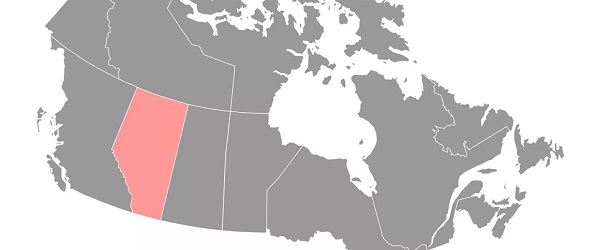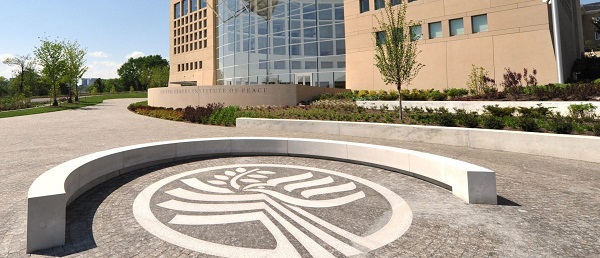Alberta
Province setting up Alberta Office to Combat Trafficking in Persons

Fighting human trafficking with community partners
Alberta’s government is partnering with three community organizations and investing $4 million to create the Alberta Office to Combat Trafficking in Persons.
Human trafficking is a serious crime that violates the freedoms and rights of individuals, including children, and attempts to destroy all personal identity and relationships. The three main categories of human trafficking are sex trafficking, labour trafficking and the trafficking of organs. Between 2011 and 2021, more than 3,500 incidents of human trafficking were reported across Canada. Many incidents go unreported, often due to fear among victims and survivors.
To fight against human trafficking, Alberta’s government developed the Alberta Human Trafficking Task Force, which submitted its final report in August of 2021. The report has five primary recommendations for government to assist in combatting human trafficking. The first of these is to create an Alberta Office to Combat Trafficking in Persons, which will facilitate the implementation of the remaining recommendations. Alberta’s government has committed $4 million over two years to make this office a reality.
“We can’t afford to close our eyes to the problem of human trafficking. And we can’t afford to ignore those who are at risk of being trafficked or those who have been trafficked. I’m proud that our government is creating this Office to Combat Trafficking in Persons to keep fighting this scourge on society.”
Operation of the Alberta Office to Combat Trafficking in Persons will be led in partnership by #NotInMyCity, Native Counselling Services of Alberta (NCSA) and REACH Edmonton Council for Safer Communities. Under their leadership, the office is another step closer to connecting survivors and victims of human trafficking to important supports and services.
In addition to the work with victims and survivors, the Alberta Office to Combat Trafficking in Persons will enhance public awareness and establish a more effective data collection process. This data will monitor the effectiveness of service delivery and help close gaps in tracking cross-jurisdictional trafficking incidents.
“The first step to fighting human trafficking is to raise awareness of the issue and its presence right here in Alberta. We are grateful to have strong partnerships with organizations that have proven to be effective in this, along with directly supporting survivors and victims. Every investment made into the combating of human trafficking is helping restore the humanity and freedom that every individual deserves.”
#NotInMyCity is a non-profit organization working to prevent, disrupt and end human trafficking and sexual exploitation. Since 2016, the organization has been building community alliances to spur collective action, always learning from and elevating the voices of victims and survivors. The organization is an important education and awareness resource for affected sectors and all Albertans.
“This milestone wouldn’t be possible without the countless organizations and individuals who shared their experiences and expertise in our journey with Alberta’s Human Trafficking Task Force. Combating human trafficking requires collective action, and we applaud the province for taking a collaborative approach with the community.”
Native Counselling Services of Alberta (NCSA) has operated in the province for more than five decades with a focus on fair and equitable treatment for Indigenous people across Alberta. From supports for family and youth to restorative justice to the active pursuit of reconciliation, the NCSA has had an important and positive impact on supports and assistance for Indigenous people in the province.
“We are advocating for Indigenous people in Alberta and committed to educating others on the important issues of exploitation and human trafficking. Understanding the Indigenous worldview and the resilience of Indigenous individuals, families and communities is a gift of learning. We are here to help and hear the people.”
REACH Edmonton Council for Safer Communities has brought together community members and organizations for more than a decade to address social challenges, advance community safety and build relationships between cultural minority communities and police services. Their experience in engaging and convening diverse community partners to find and fill service gaps will benefit the new office.
“Human trafficking is a complex problem that requires a systems approach to tackle, with multiple partners working in unison and leveraging our collective strengths and expertise. REACH is looking forward to helping build up and operate the new office to help make Alberta a safer place for everyone.”
With community partners now selected, work is underway to set up, organize and staff the office. The office will share updates on the progress of this work in the coming months.
Quick facts
- The task force was part of the Alberta government’s platform commitment to implement a nine-point Action Plan to Combat Human Trafficking.
- All nine points of Alberta’s Human Trafficking Action Plan have been implemented, or implementation is ongoing.
- Police services in Canada reported more than 3,500 incidents of human trafficking between 2011 and 2021, with the vast majority of victims (96 per cent) being women and girls, and one-quarter of victims under the age of 18.
- The most overrepresented victim group was Indigenous women and girls.
- Those interested in learning more about human trafficking, how to recognize it and how to help can take #NotInMyCity’s 30-minute online e-learning course Mobilizing Communities to Disrupt Sexual Exploitation and Sex Trafficking in Canada.
Related information
2025 Federal Election
Next federal government should recognize Alberta’s important role in the federation

From the Fraser Institute
By Tegan Hill
With the tariff war continuing and the federal election underway, Canadians should understand what the last federal government seemingly did not—a strong Alberta makes for a stronger Canada.
And yet, current federal policies disproportionately and negatively impact the province. The list includes Bill C-69 (which imposes complex, uncertain and onerous review requirements on major energy projects), Bill C-48 (which bans large oil tankers off British Columbia’s northern coast and limits access to Asian markets), an arbitrary cap on oil and gas emissions, numerous other “net-zero” targets, and so on.
Meanwhile, Albertans contribute significantly more to federal revenues and national programs than they receive back in spending on transfers and programs including the Canada Pension Plan (CPP) because Alberta has relatively high rates of employment, higher average incomes and a younger population.
For instance, since 1976 Alberta’s employment rate (the number of employed people as a share of the population 15 years of age and over) has averaged 67.4 per cent compared to 59.7 per cent in the rest of Canada, and annual market income (including employment and investment income) has exceeded that in the other provinces by $10,918 (on average).
As a result, Alberta’s total net contribution to federal finances (total federal taxes and payments paid by Albertans minus federal money spent or transferred to Albertans) was $244.6 billion from 2007 to 2022—more than five times as much as the net contribution from British Columbians or Ontarians. That’s a massive outsized contribution given Alberta’s population, which is smaller than B.C. and much smaller than Ontario.
Albertans’ net contribution to the CPP is particularly significant. From 1981 to 2022, Alberta workers contributed 14.4 per cent (on average) of total CPP payments paid to retirees in Canada while retirees in the province received only 10.0 per cent of the payments. Albertans made a cumulative net contribution to the CPP (the difference between total CPP contributions made by Albertans and CPP benefits paid to retirees in Alberta) of $53.6 billion over the period—approximately six times greater than the net contribution of B.C., the only other net contributing province to the CPP. Indeed, only two of the nine provinces that participate in the CPP contribute more in payroll taxes to the program than their residents receive back in benefits.
So what would happen if Alberta withdrew from the CPP?
For starters, the basic CPP contribution rate of 9.9 per cent (typically deducted from our paycheques) for Canadians outside Alberta (excluding Quebec) would have to increase for the program to remain sustainable. For a new standalone plan in Alberta, the rate would likely be lower, with estimates ranging from 5.85 per cent to 8.2 per cent. In other words, based on these estimates, if Alberta withdrew from the CPP, Alberta workers could receive the same retirement benefits but at a lower cost (i.e. lower payroll tax) than other Canadians while the payroll tax would have to increase for the rest of the country while the benefits remained the same.
Finally, despite any claims to the contrary, according to Statistics Canada, Alberta’s demographic advantage, which fuels its outsized contribution to the CPP, will only widen in the years ahead. Alberta will likely maintain relatively high employment rates and continue to welcome workers from across Canada and around the world. And considering Alberta recorded the highest average inflation-adjusted economic growth in Canada since 1981, with Albertans’ inflation-adjusted market income exceeding the average of the other provinces every year since 1971, Albertans will likely continue to pay an outsized portion for the CPP. Of course, the idea for Alberta to withdraw from the CPP and create its own provincial plan isn’t new. In 2001, several notable public figures, including Stephen Harper, wrote the famous Alberta “firewall” letter suggesting the province should take control of its future after being marginalized by the federal government.
The next federal government—whoever that may be—should understand Alberta’s crucial role in the federation. For a stronger Canada, especially during uncertain times, Ottawa should support a strong Alberta including its energy industry.
Alberta
Province announces plans for nine new ‘urgent care centres’ – redirecting 200,000 hospital visits

Expanding urgent care across Alberta
If passed, Budget 2025 includes $17 million in planning funds to support the development of urgent care facilities across the province.
As Alberta’s population grows, so does the demand for health care. In response, the government is making significant investments to ensure every Albertan has access to high-quality care close to home. Currently, more than 35 per cent of emergency department visits are for non-life-threatening conditions that could be treated at urgent care centres. By expanding these centres, Alberta’s government is enhancing the health care system and improving access to timely care.
If passed, Budget 2025 includes $15 million to support plans for eight new urgent care centres and an additional $2 million in planning funds for an integrated primary and urgent care facility in Airdrie. These investments will help redirect up to 200,000 lower-acuity emergency department visits annually, freeing up capacity for life-threatening cases, reducing wait times and improving access to care for Albertans.
“More people are choosing to call Alberta home, which is why we are taking action to build capacity across the health care system. Urgent care centres help bridge the gap between primary care and emergency departments, providing timely care for non-life-threatening conditions.”
“Our team at Infrastructure is fully committed to leading the important task of planning these eight new urgent care facilities across the province. Investments into facilities like these help strengthen our communities by alleviating strains on emergency departments and enhance access to care. I am looking forward to the important work ahead.”
The locations for the eight new urgent care centres were selected based on current and projected increases in demand for lower-acuity care at emergency departments. The new facilities will be in west Edmonton, south Edmonton, Westview (Stony Plain/Spruce Grove), east Calgary, Lethbridge, Medicine Hat, Cold Lake and Fort McMurray.
“Too many Albertans, especially those living in rural communities, are travelling significant distances to receive care. Advancing plans for new urgent care centres will build capacity across the health care system.”
“Additional urgent care centres across Alberta will give Albertans more options for accessing the right level of care when it’s needed. This is a necessary and substantial investment that will eventually ease some of the pressures on our emergency departments.”
The remaining $2 million will support planning for One Health Airdrie’s integrated primary and urgent care facility. The operating model, approved last fall, will see One Health Airdrie as the primary care operator, while urgent care services will be publicly funded and operated by a provider selected through a competitive process.
“Our new Airdrie facility, offering integrated primary and urgent care, will provide same-day access to approximately 30,000 primary care patients and increase urgent care capacity by around 200 per cent, benefiting the entire community and surrounding areas. We are very excited.”
Alberta’s government will continue to make smart, strategic investments in health facilities to support the delivery of publicly funded health programs and services to ensure Albertans have access to the care they need, when and where they need it.
Budget 2025 is meeting the challenge faced by Alberta with continued investments in education and health, lower taxes for families and a focus on the economy.
Quick facts
- The $2 million in planning funds for One Health Airdrie are part of a total $24-million investment to advance planning on several health capital initiatives across the province through Budget 2025.
- Alberta’s population is growing, and visits to emergency departments are projected to increase by 27 per cent by 2038.
- Last year, Alberta’s government provided $8.4 million for renovations to the existing Airdrie Community Health Centre.
Related information
-

 Media18 hours ago
Media18 hours agoTop Five Huge Stories the Media Buried This Week
-

 2025 Federal Election18 hours ago
2025 Federal Election18 hours ago2025 Federal Election Interference from China! Carney Pressed to Remove Liberal MP Over CCP Bounty Remark
-

 Automotive2 days ago
Automotive2 days agoTrump warns U.S. automakers: Do not raise prices in response to tariffs
-

 Addictions2 days ago
Addictions2 days agoThere’s No Such Thing as a “Safer Supply” of Drugs
-

 Uncategorized17 hours ago
Uncategorized17 hours agoPoilievre on 2025 Election Interference – Carney sill hasn’t fired Liberal MP in Chinese election interference scandal
-

 Censorship Industrial Complex13 hours ago
Censorship Industrial Complex13 hours agoWelcome to Britain, Where Critical WhatsApp Messages Are a Police Matter
-

 Business2 days ago
Business2 days agoTariff-driven increase of U.S. manufacturing investment would face dearth of workers
-

 Education2 days ago
Education2 days agoOur Kids Are Struggling To Read. Phonics Is The Easy Fix









